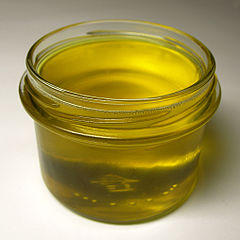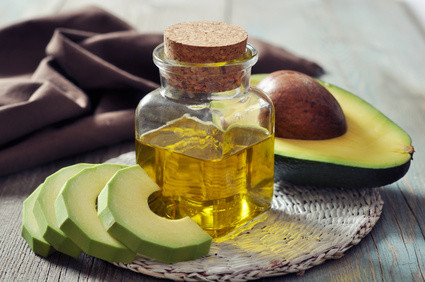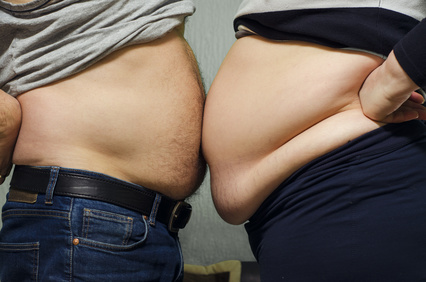Cholesterol, Triglycerides and Other Blood Lipids
Lipids are substances that are insoluble or poorly soluble in water. This means that it cannot dissolve in water. Lipids as a group comprises fats, oils and waxes. Apart from being produced in the body, lipids are an essential component of the human diet as it is needed for a number of processes to maintain health (homeostasis).
Types of Lipids
Fatty acids are the main building blocks of the various groups of lipids. In the human body, the main lipids that are of importance are triglycerides, phospholipids and cholesterol. Triglycerides and phospholipids are made up of fatty acids and glycerols and are commonly referred to as fats. Cholesterol is a waxy sterol and is made up of parts of fatty acids like acetyl coenzyme A (acetyl-CoA).
Function of Lipids
Lipids play many important roles in the body. Apart from being produced in the body, it is also acquired through the ingestion of food. It is a major source of nutrition and provides more energy ounce for ounce than other foods like carbohydrates and protein. The main functions of lipids in the body are to provide energy and form the membranes of cells and organelles.
These functions consume most of the lipids in the body. Other equally important functions that consume smaller amounts of lipids includes the formation of bile salts, production of hormones, and creating a waterproof and insulating barrier in the skin. Lipids also play an important role in cushioning the body and vital organs by absorbing force (shock).
What is Cholesterol?
Cholesterol is a waxy substance known as a sterol that is manufactured primarily by the liver or to a lesser extent by other cells in the body (endogenous cholesterol) and is also absorbed from food in the gut (exogenous cholesterol). Cholesterol does not contain fatty acids but since it is made from fatty acid molecules, it is highly fat soluble. It can therefore not travel on its own in the blood stream and has to be bound to lipoproteins.
Cholesterol in Foods
When cholesterol is absorbed from the gut, it is transported in the form of a chylomicron from the intestinal lacteals, through the lymphatic system and emptied into the blood stream. These chylomicrons do not only carry cholesterol but it also carries other types of fats like triglycerides and phospholipids. The adipose tissue and liver break down these chylomicrons by the action of the enzyme lipoprotein lipase. Some fat is stored in the adipose tissue and the rest is taken to the liver for further processing.
Read more on cholesterol diet.
Cholesterol in the Liver
Fats in the body are broken down to form acetyl coenzyme A (acetyl-CoA) which can be metabolized to release large amounts of energy. Acetyl-CoA molecules can form a sterol nucleus which is essentially cholesterol or its derivatives. Most of this cholesterol is used for the production of bile salts but it may also enter the blood stream and travel to other parts of the body where it can be used in various ways as discussed below under the functions of cholesterol.
Read more on liver cholesterol.
Cholesterol in the Blood
Lipids (cholesterol, phospholipids and triglycerides) travel in the blood in the form of lipoproteins, which are a combination of alipoproteins and lipids. It is produced in the liver and while a chylomicron is also a form of lipoprotein, there are 4 other types of lipoproteins which play an important role in fat metabolism, transport and utilization.
- VLDL – very low density lipoprotein
- IDL – intermediate density lipoprotein
- LDL – low density lipoprotein
- HDL – high density lipoprotein
These lipoproteins carry triglycerides, phospholipids and cholesterol – VLDL has the most amount of triglycerides while LDL has very little or sometimes no triglycerides. It is the effect of these different types of lipoproteins on cholesterol that is of the greatest interest for diseases associated with hypercholesterolemia.
LDL is a source of cholesterol for cell membranes and other functions of cholesterol that are discussed below. HDL is the body’s mechanism to guard against excess cholesterol by taking up the cholesterol from tissues and transporting it to the liver where it is passed out in bile salts.
LDL is commonly referred to as “bad” cholesterol while HDL is known as “good cholesterol”.
Read more on signs of high cholesterol.
Functions of Cholesterol
Cholesterol has important roles in the body.
- It is an integral component of cell membranes and the membranes of internal organelles.
- It is used to make cholic acid in the liver which is a part of the bile salts that breaks down fat and assist with fat absorption in the gut.
- It helps to form a waterproof barrier along with lipids in the skin. This prevents water loss from the skin (evaporation) or the entry of solvents into the body.
- It is used to make important hormones in the body :
- Progesterone and estrogen in the ovaries.
- Testosterone in the testes.
- Adrenocorticol hormones in the adrenal glands.
What are Triglycerides?
Triglycerides are one of the types of lipids present in the human body and can be sourced from food or is manufactured within the body. It derives its name from its chemical structure – three long chain fatty acid molecules bind with one glycerol molecule. The most common fatty acids found in triglycerides are stearic acid, palmitic acid and oleic acid. While triglycerides have many useful functions, it is also a central component of obesity and related diseases.
Read more on trigylceride levels.
Functions of Triglycerides
Triglycerides are an important means for the storage of food, not only fats, but also excess carbohydrates and proteins. This can be found in the adipose tissue in the body. When broken down into fatty acids and metabolized by the cell, triglycerides can release large amounts of energy which is more than the energy released in carbohydrate metabolism.
Triglycerides are also an important source of compounds that can be used to manufacture other lipids like cholesterol. This in turn can be used for the various functions of cholesterol.
Small amounts of triglycerides are important structural components of cell membranes although it is present in smaller quantities than other lipids like cholesterol and phospholipids.
Read more on triglyceride diet.
Triglycerides in Fat Tissue
In the blood stream, chylomicrons travel to the adipose tissue (“body fat”) and liver. The adipose tissue breaks down the triglycerides into fatty acids and glycerol by the action of the enzyme lipoprotein lipase. Once these components are in the adipose tissue, it is resynthesized into triglycerides and stored in the fat droplet of adipocytes (fat cells). Small amounts of free fatty acids do remain in the adipose tissue and play a role in regulating carbohydrate storage as fat.
When the body needs fatty acids for energy production, the triglycerides are once again hydrolyzed and the fatty acids are carried by the blood protein, albumin, to the target site. Triglycerides stored in the adipose tissue may also be carried to the liver for further processing if necessary.
Triglycerides in the Liver
Triglycerides reach the liver from the adipose tissue as fatty acids and also directly from the gut bound to chylomicrons. The liver is capable of storing triglycerides but its storage capacity is less than adipose tissue. The liver can break down triglycerides into simpler fatty acid molecules which is further processed into compounds like acetyl coenzyme A (acetyl-CoA).
These acetyl-CoA molecules condense to form acetoacetic acid which travels to different tissues where it can be used for energy production. Acetyl-CoA is also used for producing other lipids like cholesterol. in the liver. Apart from breaking down triglycerides, the liver also synthesizes triglycerides from excess carbohydrates and proteins – this is the reason that a high intake of calories, even on a low fat diet, will lead to fat deposition.
Triglycerides in the Blood
Triglycerides are transported by lipoproteins. Apart from chylomicrons, large amounts of triglycerides can be found in VLDL (very low density lipoproteins) with decreasing amounts in IDL and LDL. High levels of VLDL in the blood is seen in conditions such as familial hypertriglyceridemia. Like cholesterol, high levels of triglycerides in the blood are associated with coronary heart disease.








